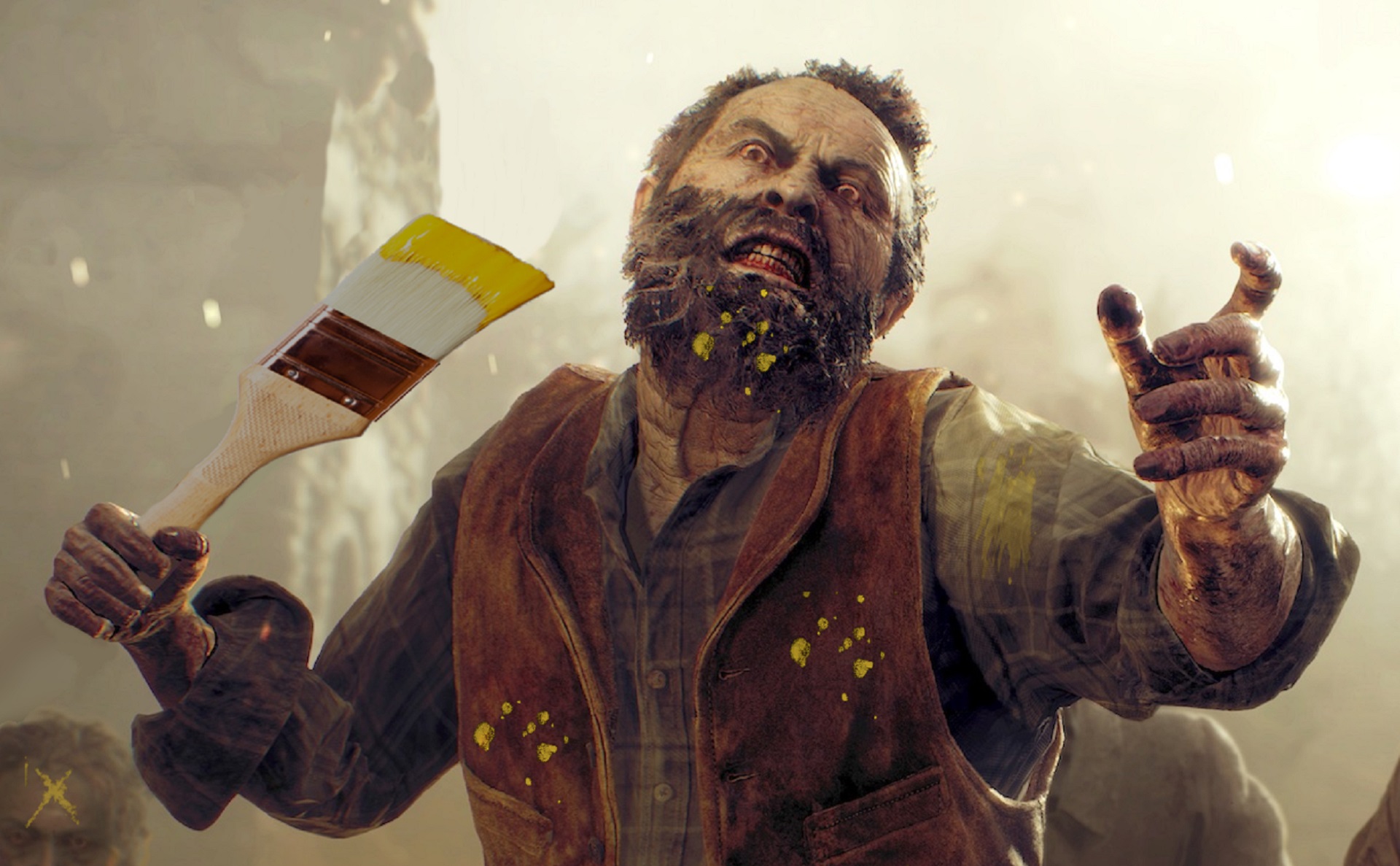Debate over Resident Evil 4 Remake's yellow paint resurfaces as devs explain just how much help players really need: "Realism is less immersive"
Sometimes devs just gotta make things really, really obvious

Devs and players are once again going back-and-forth on the yellow paint that Resident Evil 4 Remake uses to highlight environmental fixtures like climbable ladders and lootable barrels.
the yellow paint is so unnecessary obviously a ladder is climbable obviously a crate is breakable why did they do this pic.twitter.com/oWTxn8rmGTOctober 2, 2023
This isn't the first or even second time this particular design choice has sparked debate, but the arguments and anecdotes coming from the latest discussion are probably the best ones yet. Here's hoping we can finally put this to bed.
The, for lack of a better word, Gamer Take remains pretty much unchanged: using yellow paint to highlight stuff is "unnecessary," an insult to the player's intelligence, gaudy, immersion-breaking, inelegant, and therefore this kind of visual filter should be optional rather than baked into the game.
I can at least see the argument for making this type of thing a graphical setting, if only because, as advocate Steven Spohn points out, it's a huge accessibility win – though as I've said before, people who would disable this setting deserve the frustration that's coming to them. But the idea that it makes games less immersive dissolves under even the mildest scrutiny.
The responses from developers have been many and varied, usually focusing on the pitfalls of realistic graphics and the realities of playtest feedback. "As environments get more detailed and realistic, materials get more complex and noisy, etc, it becomes increasingly difficult to direct players in unobtrusive ways," argues Dusk and Iron Lung creator David Szymanski. "And generally developers err on the side of caution when it comes to keeping players from getting stuck."
"The largest reason this kind of condescending telegraphing is necessary is the ridiculous amount of visual noise we've allowed into our environment design due to chasing 'realism' and using bad design processes for 15 years," echoes game design associate professor Ty Underwood.
When we demoed our 2D platformer at PAX- an expo for fans of video games, we had to tell multiple adults how to hold the controller so that they wouldn't hold it upside down. https://t.co/USeyP1zQXmOctober 5, 2023
In a lengthy thread, Boss Fight creative director Damion Schubert argues that "art directors all wish this guy was correct" and environmental clarity really was that easy, but unfortunately, "the push towards more realistic art increases the need for more unrealistic visual cues."
Weekly digests, tales from the communities you love, and more
"This is one of those counterintuitive cases where realism is less immersive," Schubert adds. "Immersion is not a measure of how realistic the grass looks, it's a measure of how much you are into flow of the experience. And while hot shit art can be a factor, game readability trumps it ... The things that break immersion are the things that break your flow in a game, usually because you know what you need to do but can't figure out how to interact with the game to do it."
Bringing us back to the barrels and ladders, Schubert says: "Trying to open 30 doors to find one we can go through breaks immersion, because the tedium of the experience calls attention to the faults of the simulation." A sprinkle of yellow paint saves Leon Kennedy some valuable time and keeps him focused on the stuff that's actually immersive, in other words.
The Division artist Palle Hoffstein jokes that he once felt "we don't need the signs and breadcrumbs. Players aren't stupid. Let them explore." But all it took was some playtesting for him to look at environmental highlights and say "put it back and let's never speak of this again."
"I promise the yellow paint was added in after a dev was forced to watch in silence as a playtester got stuck for 20 minutes looking for a way up," says Joseph Hunter, lead developer of Sucker for Love and Chromatose.
Fully supporting the yellow paint, Ben Myres of studio Nyamakop revives an iconic picture taken years ago as he watched event-goers play through a live demo of the puzzle game Semblance: "This is the face of a designer watching someone playtest their game after deciding NOT to put yellow paint on their ladders."
This is the face of a designer watching someone playtest their game after deciding NOT to put yellow paint on their ladders.🟡🖌️🤝🪜https://t.co/BqShQaSf0y pic.twitter.com/zjWSzwpvcVOctober 6, 2023
Inner voices creator Pedro Braga shared a laundry list of "things that seemed obvious to me but weren't during playtests," including:
- "In a platformer, players would assume you had to go to the right and kept jumping in the void over and over. I had to add a revolving staircase that spins you and makes you face left."
- "When players got to a village, they wouldn't interact with any of the houses. So I added a giant exclamation point in one of them."
- "Players won't pick up a necessary item even though it's on a pedestal... So I make it [floating and glowing] instead."
- "It doesn't matter what the vibe of the game is, people always try to beat the shit out of everyone they meet. Blocking the attack button would be too handhold-y, so I add a disapproving response from the NPC. Then players are like 'oh i'm so sorry.'"
- "I have [to make] holes impossible to jump through twice as large otherwise people will be trying to make the jump for hours and get bored of the game."
Fortunately, senior narrative designer Keano Raubun has solved the debate once and for all with what I think we can all agree is Peak Environmental Signposting.
Fixed the yellow paint problem. This why they pay me the big bucks, baby. 🏀 pic.twitter.com/8BIbu3jSMsOctober 5, 2023
Dark Souls with old-school Resident Evil camera angles is too cursed even for its creator.

Austin has been a game journalist for 12 years, having freelanced for the likes of PC Gamer, Eurogamer, IGN, Sports Illustrated, and more while finishing his journalism degree. He's been with GamesRadar+ since 2019. They've yet to realize his position is a cover for his career-spanning Destiny column, and he's kept the ruse going with a lot of news and the occasional feature, all while playing as many roguelikes as possible.


